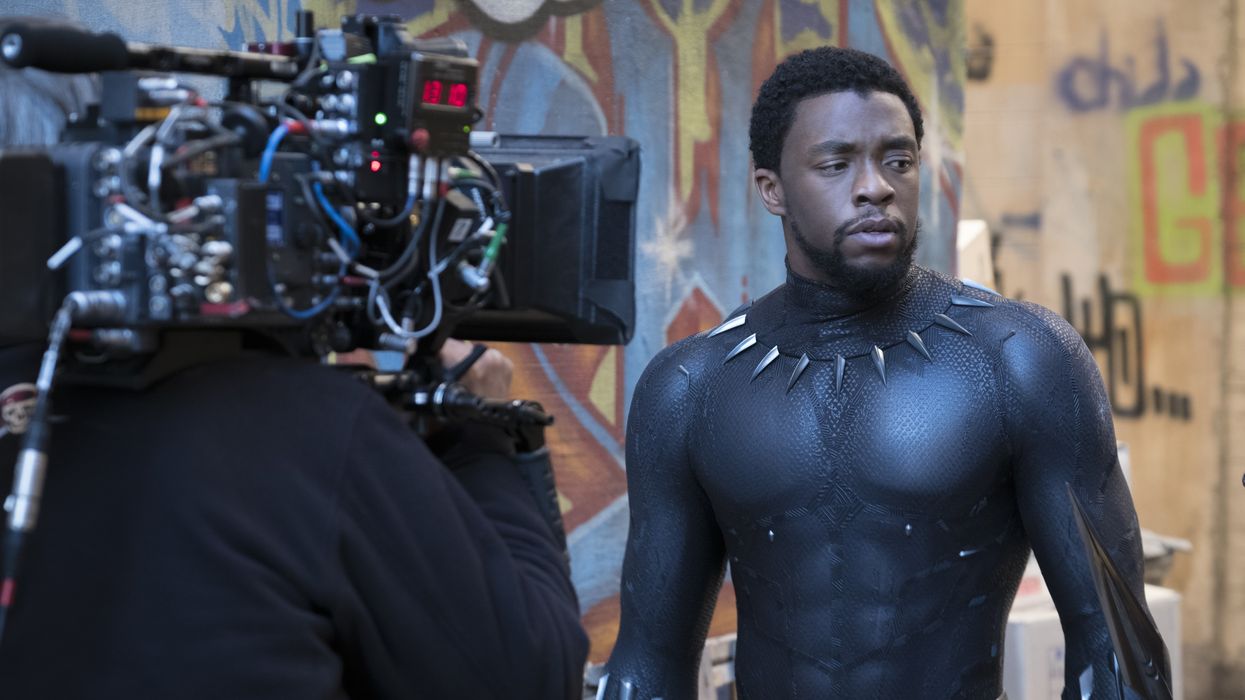How the Costumes of 'Black Panther' Pulled from Reality to Elevate a Fictional World
Two-time Oscar-nominated costume designer Ruth E. Carter reveals how indigenous African cultures influenced the latest from the Marvel Cinematic Universe.

Spoiler alert: 'Black Panther' plot points revealed in this post.
Black Panther is crushing the box office and for good reason. Director Ryan Coogler knows how to layer a story with complex themes, and one fruitful way the helmer emphasized narrative patterns was through the wardrobe.
For costume designer Ruth E. Carter, the ambition was to create the story through textile, color, and cut. “That was my approach to everybody. What is the story behind the costume? We didn’t want to just add a buckle there or a piece of jewelry here. It needed to be more than that,” says the two-time Oscar nominee (for Spike Lee's Malcom X and Steven Spielberg's Amistad).
The film unfolds in Wakanda, a fictional African nation filled with futuristic tech and tribal tradition. To blend the ancient with the modern, Cater honored the customs of indigenous African tribes and drew from contemporary designers Duro Olowu, Ozwald Boateng, Ikire Jones, and others from Japan. “We didn’t want to show the people of Wakanda in an anthological way. It was important to think outside of the box but also show a queen, a mother, a sister, a warrior, in a way where you could picture yourself in their shoes and want to be like them.”

Costumes were detailed in vibrant color palettes of aubergine, chartreuse, crimson, or silver. Blue signified danger and was reserved for the Border tribe who acts as the policing force. This same color was also reserved for the film’s unyielding antagonist Erik Killmonger (Michael B. Jordan). The River tribe was outfitted in green (the color of Nakia, played by Lupita Nyong’o as a Wakandan spy). To dress Wakanda’s Jabari tribe in their grass skirts, Carter took note from the African Dogon tribe. African art played a role as well, as geometrical shapes, like the triangle, were introduced into the detailed pattern work.

The neck rings worn were patterned after the women of the Ndebele tribe who wore similar neck rings. “Coogler wanted to emphasize that the Dora Milaje were the Navy Seals of Wakanda,” notes Carter. “Using Marvel’s designs, we infused culture, beads, and the workmanship and how the armor and metal were presented. We really wanted the armor to feel like jewelry.”

Bringing it to life, Carter used a lighter material and a silver missile suit for the vibranium layer which can be seen underneath an overlay of thin fabric imprinted with tribal triangle patterns. A medallion was incrusted on the chest and a new panther-tooth necklace and overhauled helmet provided the finished look.

When T’Challa sees his mother Ramonda (Angela Bassett) for the first time, she’s wearing an intricate white ensemble that was actually 3-D printed. The Zulu-inspired headpiece was perfectly cylindrical and the shoulder mount came from English designer Gareth Pugh. Carter worked with UCLA professor Julia Korner, who specializes in wearable art, to nail down the designs.
“It’s a difficult process to get right,” admits Carter. “We learned a lot about algorithms and how you transform design onto the computer and then how that information is used to further develop the costumes. Sometimes it comes out broken so you have to start all over again. It was a wonderful process and it was like opening up presents on Christmas when we got it right.”

In giving advice to young filmmakers, Carter notes, “It’s important to have a good relationship with your director. Even if they are busy, you need to show them what you’re doing so there are no surprises and you feel comfortable from the start. We had a good line of communication with Ryan on Black Panther and it allowed us to use every bit of your tight budget.”
'Black Panther' is currently in theaters worldwide.











